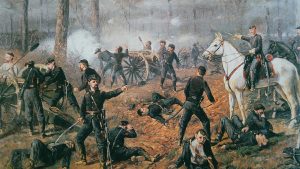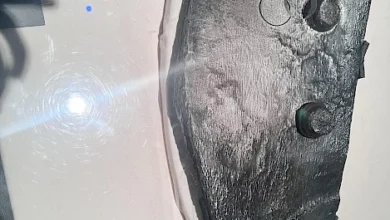Strange Facts Behind the Legend of the Angel’s Glow

 The Battle of Shiloh, fought over two days from April 6 to April 7, 1862, marked a decisive moment in the American Civil War.
The Battle of Shiloh, fought over two days from April 6 to April 7, 1862, marked a decisive moment in the American Civil War.
The clash, also known as the Battle of Pittsburg Landing, saw the Union forces led by Major General Ulysses S. Grant face off against the Confederate troops commanded by General Albert Sidney Johnston. The battle took place in southwestern Tennessee and was one of the war’s earliest large-scale engagements in the Western Theater.
The bloodiest battle up to that point in the war produced 23,000 casualties on both sides. The battlefield itself was a boggy, mud soaked hellhole. Medical services on both Confederate and Union sides were woefully unprepared for the scale of the slaughter, and many wounded were left to fend for themselves among the watery morass.
When help finally managed to reach those poor souls, their rescuers noticed something odd. Their wounds gave off a faint glow in the night.
Furthermore, the wounded whose injuries glowed had a better survival rate than their peers whose wounds did not. At a loss to explain what was happening, the flummoxed soldiers dubbed the strange phenomena “Angel’s Glow,” because it truly did seem to be the work of angels.
For a long while, the story was regarded as little more than folklore. That is, until seventeen year old Bill Martin heard the story, and asked his mother, Phyllis Martin, who is a microbiologist, if the bioluminescent soil bacteria she was studying, photorhabdus luminecens, might be responsible for the strange tale.
She encouraged her son and his friend, John Curtis, to do further research and experiment to uncover the answer (because that’s what happens when mom is a scientist.) What they found was a remarkable explanation behind a story that was long regarded to be little more than a legend.

Photohabdus luminescens‘weird lifestyle
P. luminescens is an unlikely saviour. The bacteria hangs out in the guts of various nematode worm species, living in an odd symbiosis. The nematodes are predators of the soil, hunting down insect larva which they devour with P. luminescens’ help.
The nematodes burrow into the unfortunate larva’s bloodstream, where they puke out their bacterial payload. P. luminescens releases toxins that kill the bug in short order, giving the nematode quick access to an insect buffet. These toxins also inhibit the growth of bacteria that would decompose the insect corpse, letting the germ and the worm have plenty of time to feast and multiply in their prey’s carcass.
It is this toxin that was likely responsible for helping the soldiers survive their horrific wounds. The hypothesis that Martin and Curtis developed claimed that the glowing bacteria entered soldier’s wounds when nematodes attacked the insect larva who are naturally attracted to such injuries. The resulting infestation would wipe out any of the normal, disease causing bacteria found in wounds.
The only problem with the hypothesis was that P. luminescens cannot survive at human body temperatures. The teenage scientists came up with a novel way to approach this problem.
For once, hypothermia was a good thing
Their answer lay in the muddy battlefield itself. The battle took place in early April, when temperatures were relatively low. Adding to the misery, it rained on and off throughout the battle. Injured men were left exposed to the elements for two days in some cases.
By that time, hypothermia would have set in. That would have given P. luminescens time to take hold and kill off harmful bacteria. Then, when the soldiers were taken in and warmed back up, their bodies would have naturally killed off the bug. For once, hypothermia was a good thing.
With that, the teenagers managed to present a plausible explanation for the Angel’s Glow, a phenomena that was long thought to be little more than fanciful thinking by desperate men.
The exact nature of the toxin the bacteria uses to perform its medical miracles has yet to be identified, but the duo are working to isolate it. Perhaps the bacteria that saved lives 150 years ago might be able to save even more today.




